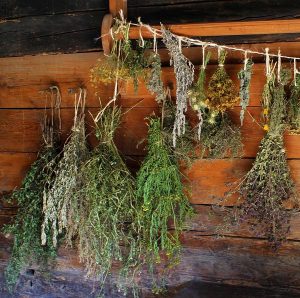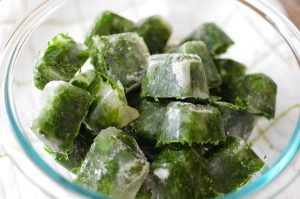Herbs are a fragrant, simple and healthy way to add layers of flavor to any dish. Growing them yourself in your own garden or with indoor container gardening techniques is simple, and the bounty endless. What do you do with all of these delicious plants that add so much to our supper table? There are a multitude of different preservation methods to enjoy the fresh and flavor packed herbs all year long.
Be sure to harvest your herbs before they begin to flower. In the early stages of a plants life, all the energy that they produce goes into their root structure and leaves. Once established, the plant’s natural life cycle morphs into flowering and dropping seeds to continue that species. Once an herb flowers, the flavor will become mild and bitter. If your herbs have already flowered, simply pluck the flower and give the plant a few days so that the flavor will return to the leaves.
How to store your fresh herbs
Fresh herbs from your garden grown in the Willamette Valley can be typically placed into one of three categories: hardy, tender or basil. Once you have picked your herbs, no matter what the type, wash thoroughly under cool water and then give them a spin in your salad spinner. Lay them out on paper towels and pat them d ry.
ry.
Hardy herbs such as rosemary, thyme, sage, savory and chives should then be laid out on paper towels, rolled like a jelly roll, and stored in a zip top bag or plastic wrap in the refrigerator.
Tender herbs such as cilantro, parsley, oregano, dill, mint or tarragon should be cleaned of any dead leaves at the bottom, and then given a clean snip of the stem. Place them in a mason jar filled with an inch of water, and then either seal the jar, or cover with plastic wrap and sealed with a rubber band.
Basil should be snipped at the bottom for a fresh cut, and then placed in a large Mason jar or vase with an inch or two of water in the bottom, like you would store fresh flowers. Place your basil somewhere at room temperature in a well ventilated area, but out of direct sunlight and use within two weeks.
When you can’t use them all right away
Once harvested, you have a couple of options for drying your herbs. The traditional gentle drying method is to pluck from the bottom 2-3 inches of the herb, tie it all into bunches and hang your bunches upside down in a dry, well-ventilated space. Typically, herbs will be dry and ready for storage within 2-3 weeks.
There is another method, however, and you experimental home cooks are going to love it! Instead of waiting weeks for their herbs kitchen hack expert Alton Brown suggests creating your own “dehydrator”. While this sounds complicated, it’s not at all. One simply uses a box fan and furnace filters to dry herbs in 24 hours. Find out how to create this set-up by clicking here.
Freezing for a pop of summer all winter long
The best way to freeze herbs is to take your fresh herbs, roughly chop them or pulse them quickly in a food processor. From there, add a small amount of neutral oil (I like to use a light olive oil or canola oil) and fill up an ice cube tray dividing the herbs into your preferred measurement. Once frozen, remove from the ice cube tray and store in a Ziploc bag. When ready you’re ready to use, just toss into your recipe for a pop of flavor. Alternatively, you can take your herb/oil mixture and fill a Ziploc bag, removing as much of the air as possible. Lay the bag flat on a plate or sheet pan and freeze. When you are ready to use, just break or cut off as much or as little as you need.
break or cut off as much or as little as you need.
Pesto; an easy delicious condiment!
And the great ways to preserve herbs doesn’t end there! Basil, tarragon, chives, cilantro and other green herbs make fantastic pesto that can be used in in a variety of different applications. Simply mix with garlic, nuts and parmesan cheese (or other ingredients like capers or olives) to make your own personal pesto! Have a nut allergy, leave them out. Don’t eat cheese, try adding nutritional yeast. You can play with different types of oils and customize your pesto the way that you and your family like it. The possibilities are endless.
Pesto can be tossed with pasta, used as a sandwich topping, or used as a marinade for meats and vegetables.
Still confused? Try making pesto with this basic ratio: 1:2:2:8. This means 1 part nuts, 2 parts oil, 2 parts grated cheese, and 8 parts herb. Most people add garlic, lemon, and salt to taste. Traditional pestos are made in a mortar and pestle; however modern ingenuity and the food processor have simplified the process. Simply pulse your desired amount of garlic, and then add the herbs, oil and nuts. Run the processor until a paste is created and the desired consistency is reached. Add your grated cheese and voila!
Be sure to taste and see if it needs any acid (like lemon) or salt or pepper. Just like that, you now have pesto that is ready to use in any application of your choice, or seal in zip top bags, ice cube trays or reusable containers for a taste of summer in the long winter months. Have a nut allergy, leave them out. Don’t eat cheese, try adding nutritional yeast. You can play with different types of oils and customize your pesto the way that you and your family like it. The possibilities are endless.
